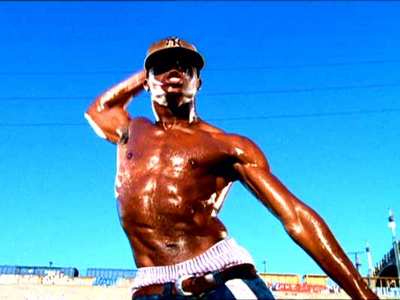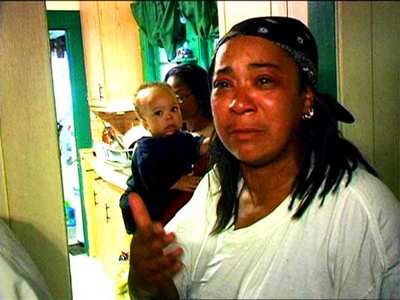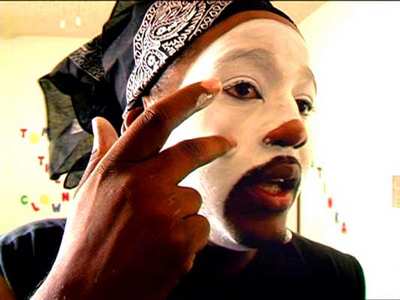Review of Rize
Introduction
When David LaChapelle was directing Christina Aguilera`s video for `Dirrty`, two of the choreographers recommended that he travel to South Central LA and see a new style of dancing known as `The Stripper Dance`. Whilst he was there, he met Tommy the Clown, a dancer and dance instructor who pioneered `Clown Dancing`. The two struck up a friendship and LaChapelle became so interested that he decided to make a film about the neighbourhoods in South Central which instead of joining either the `Crips` or `Bloods` gangs, directed their energy into dancing. What initially was intended to be a film became a documentary into dancing, friendship and the hazards of living in South Central.

Video
The video is for the most part good, although there is some blurring around the edges in some scenes. Despite this, the frenetic dancing is presented well with no distortion.
There are English and English HoH subtitles, which are clear and also include the lyrics for the songs on the soundtrack.

Audio
DTS and DD 5.1 English soundtracks are available, which both clearly present the dialogue and the bassy soundtrack which comprises Hip-Hop/Rap music and featuring such artists as Tupac, Dizzie Rascal, Lauren Hill and Christina Aguilera.

Features
The commentary by David LaChapelle contains some interesting information on the genesis and evolution of the film. LaChapelle is quietly spoken yet is able to provide a commentary that is both informative and revealing.
The DVD introduction with cast and David LaChapelle is only available as part of the extra features on its own and it`s strange that you can`t choose to watch the film straight after the introduction.
The `Filmmaking Insight with Director and Director of Photography` isn`t as interesting as the title suggests, as LaChapelle basically tells you how the film was shot and the DoP models the home-made Steadicam that he used during filming.
The `Dancer interviews with David LaChapelle` comprises the same setup as the introduction and `film making insight` as LaChapelle sits in what looks like a community centre with the cast and they chat briefly. Not particularly interesting or riveting, as much of what the cast had to say is contained in the documentary.
The `Tribeca Film Festival Q&A with cast` is an edited Q&A session from a festival screening of the film in which the cast respond to a few questions from the audience with varying degrees of interest.
The David LaChapelle photo gallery has one advantage over the usual photo galleries on DVDs in that the DVD scrolls through the photos by itself with music from the soundtrack playing. LaChapelle is a photographer of some renown so the photos of the dancers are outstanding.
The `Dance moves` featurette contains 8 of the cast showing their favourite move and talking you through it, should you wish to try it in your own living-room!
The `Extended dances` featurette contains footage of the `Clown` and `Krump` dancing that was too long to make it into the finished film. It`s nicely put together and does a good job of showing off the energy and skill of the dancers.
The deleted scenes show why they were omitted from the released film as none of them would have added much, if anything, to the film and there isn`t one that would have improved the film by its inclusion.

Conclusion
If you think of a film made in a poor area of South Central LA, you are likely to come up with something along the lines of `Boyz n the Hood`, `Menace II Society` or `Higher Learning` and may expect a great deal of gang violence and death. Rize is the exception to the rule as it shows how many young people have avoided becoming gangsters as they have chosen to spend their spare time dancing and, instead of joining the `Crips` or the `Bloods`, they are either `Clown` dancers or `Krumpers` and the nearest they get to gang warfare is the 5th Battle Zone `dance-off`.
The film begins with the disclaimer `No parts of this film have been speeded up in any way` and it is important to bear this in mind given the speed that many of the dancers move. It`s possible to enjoy this film purely as a visual spectacle and marvel at the dance moves that, in all likelihood, will find their way into popular culture (if they haven`t already) and Rize will stand as a document of how and where the dance began. However if you look below the surface and take into account that the neighbourhood is the same that was affected by the `Watts Riots` in 1965 and the 1992 Rodney King riots, then it is all the more amazing that these young people paint their faces, dress as clowns and spend their spare time and aggression dancing.
Your Opinions and Comments
Be the first to post a comment!